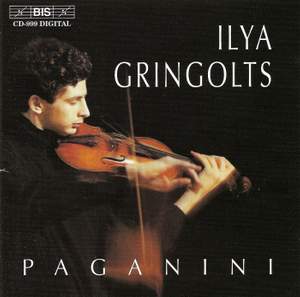Ilya Gringolts plays Paganini
Ilya Gringolts (violin), Irina Ryumina (piano)
Lahti Symphony Orchestra, Osmo Vänskä
Ilya Gringolts is an outstanding young Russian violinist; with this Paganini programme he began his recording career at the deep end. He's able to surmount the ferocious technical demands, and... — More…
CD
$14.75Downloads
What are FLAC and MP3?Contents
Paganini: Introduzione
- Ilya Gringolts
Capriccio
Paganini: Introduction & Variations on 'Nel cor più non mi sento' by Paisiello, MS 44
- Ilya Gringolts
Tema. Andante
Variation 1
Variation 2
Excerpt,
- Ilya Gringolts, Irina Ryumina
Violin Concerto No. 2 in B Minor, Op. 7: III. Rondo, "La Campanella" (Arr. For violin and piano)
Paganini: Sicilienne in E-Flat Major
- Ilya Gringolts
- Lahti Symphony Orchestra
Cantabile in D Major, Op. 17, MS 109 (arr. For violin and orchestra) [Attrib. Paradis]
Paganini: Introduzione
- Ilya Gringolts
- Lahti Symphony Orchestra
- Osmo Vänskä
Paganini: Introduction & Variations on 'Dal tuo stellato soglio' from Rossini's 'Mosé in Egitto', MS23 (Op. 24)
- Ilya Gringolts
- Lahti Symphony Orchestra
- Osmo Vänskä
Tema
Variation 1
Variation 2
Variation 3
Paganini: Violin Concerto No. 1 in D major, Op. 6
- Ilya Gringolts
- Lahti Symphony Orchestra
- Osmo Vänskä
I. Allegro maestoso
II. Adagio espressivo
III. Rondo. Allegro spiritoso





